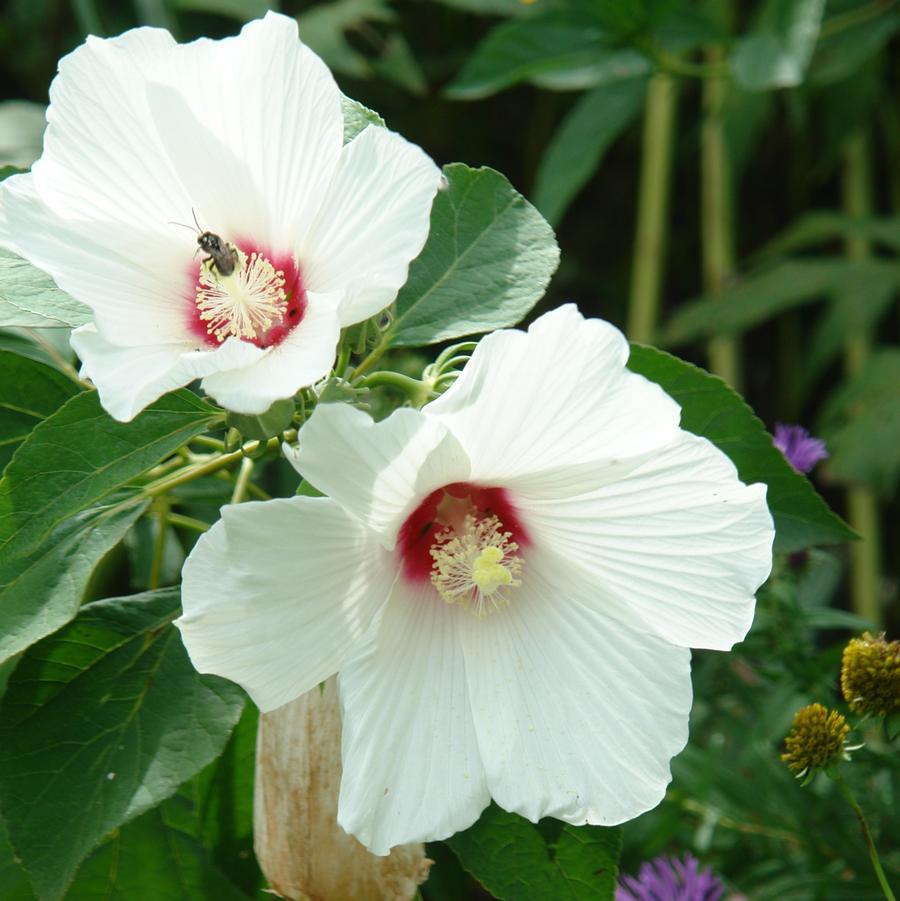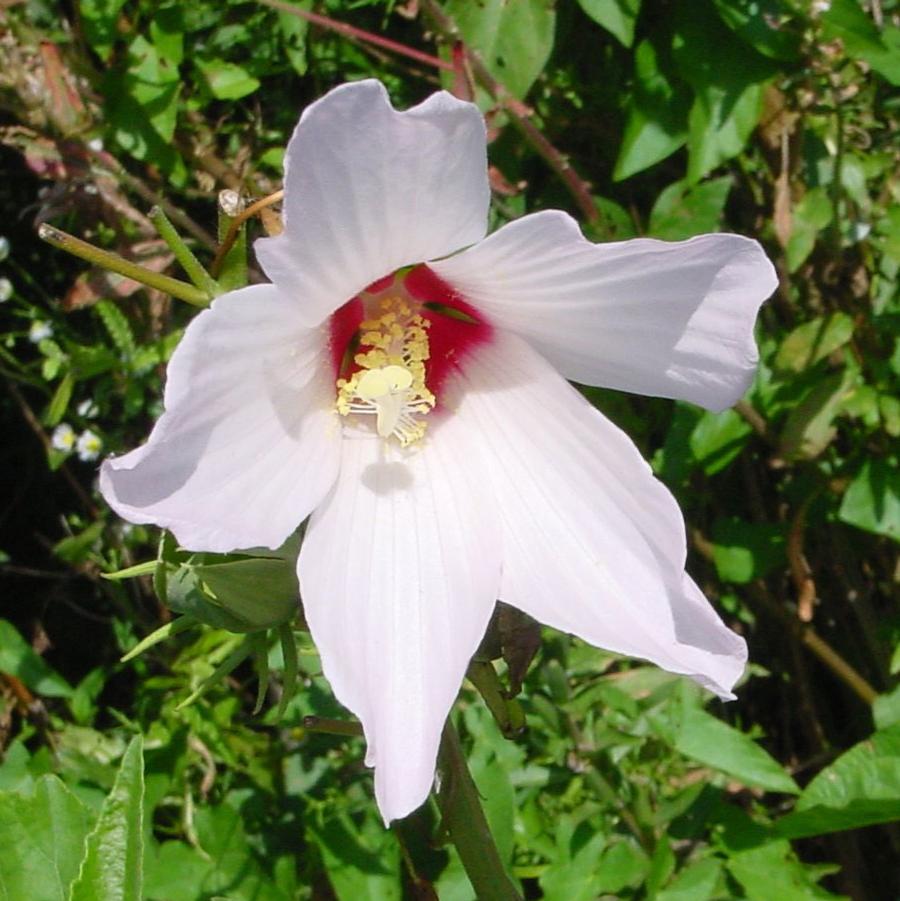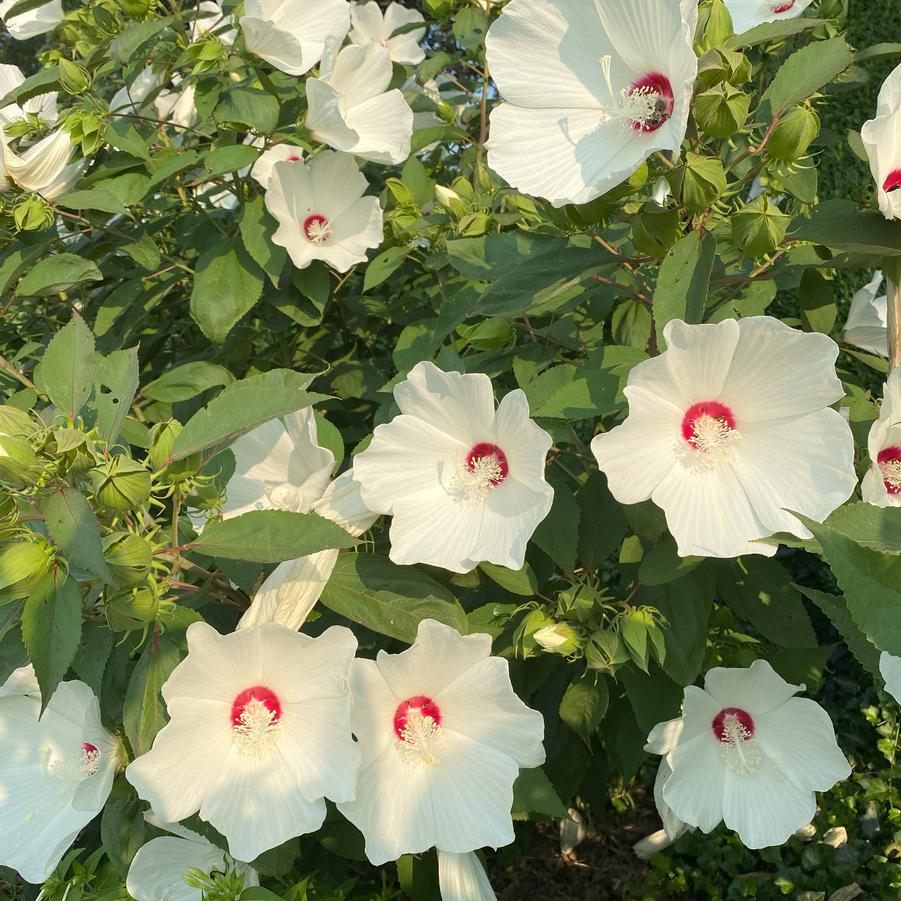





Plant Calculator
Enter the approximate length and width of the area you will be planting and click 'Calculate' to determine how many Hibiscus moscheutos you will need.
Correct and successful spacing is complex and depends on project conditions. We encourage you to call us at 877-ECO-PLUG for project specific recommendations and further assistance.
Hibiscus moscheutos
swamp rosemallow
- Category: Perennial, Native
- Hardiness Zone: 5-8
- Height: 3-7 Feet
- Spread: 3-4 Feet
- Spacing: 24 Inches
- Bloom Color: Pink
This shrublike herbaceous perennial is a vigorous grower with large, glabrous leaves and 4-5" wide flowers that range from pink to white. The flowers last only for one day, but they appear consistently until the end of the season. An amazing show of color and grace!
Wetland Indicator Status
| • | Obligate Wetland (OBL) |
Plug Type
| • | Landscape Plug™ |
Propagation Type
| • | Open pollinated |
Additional Information about Hibiscus moscheutos
Hibiscus moscheutos is a shrublike herbaceous perennial that is a vigorous grower with large, glabrous leaves and 4-6" wide flowers that range from pink to white. The flowers last only for one day, but they appear consistently until the end of the season. An amazing show of color and grace! A pleasure when grown in mass, this perennial brings a tropical feel but is very cold-hardy and does the job when other perennials would suffocate in wet, heavy clay.
H. moscheutos can be found in brackish waters and swamplands from Texas to Florida to Indiana to New Jersey. Loving Swampy forests, wet meadows, and marshes, the plant becomes truly impressive in the large stands to be found in the waters of Louisiana.
Rose mallow root was used in the past to create marshmallow because of its sticky and glutinous texture. Nowadays, H. moschuetos supports over two dozen variety of insects as well as hummingbirds and songbirds with its nectar and seed. It is best planted as a border plant in groups, as a large container plant, along streams or ponds, or as a seasonal hedge. For a bushier habit, perform an late spring pinch on stems. Plant requires full sun, consistent moisture, and good airflow. A good breeze prevents a common issue of powdery mildew.
Growing & Maintenance Tips for Hibiscus moscheutos
This plant needs rich soils, consistant moisture and full sun. Good air circulation may help to prevent disease. Requires fertilizer due to its rapid growth in early summer and may require staking. Propagated by seed, greenwood cuttings, root division and layering. Mulch during winter to protect roots from frost and prune in early spring for bushier growth. Best effect when planted in groupings of 3 or more. Plant in areas that remain moist such as the banks of a stream or pond, shrub beds or entranceways for most dramatic effect.
